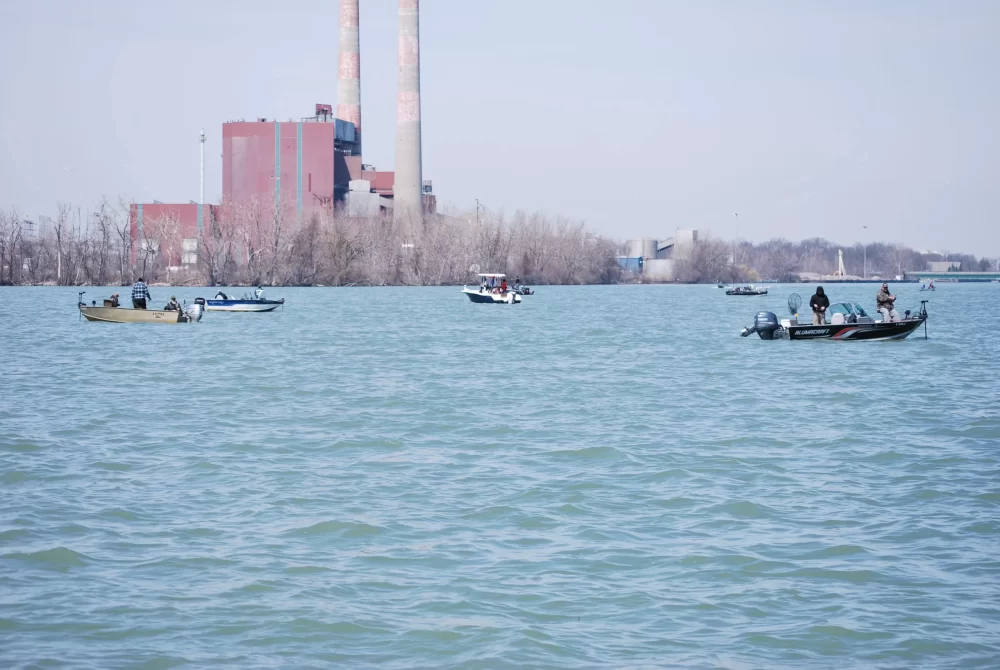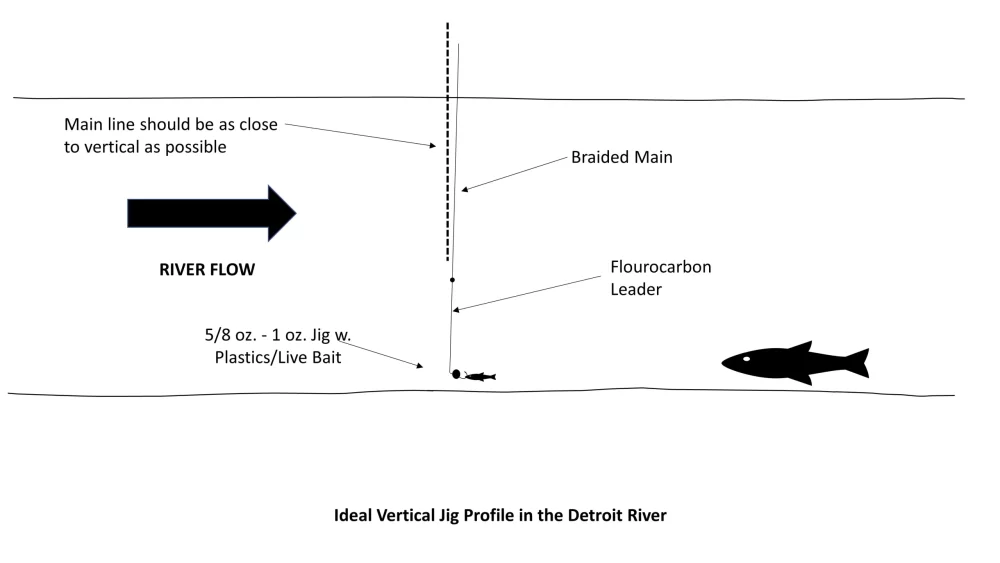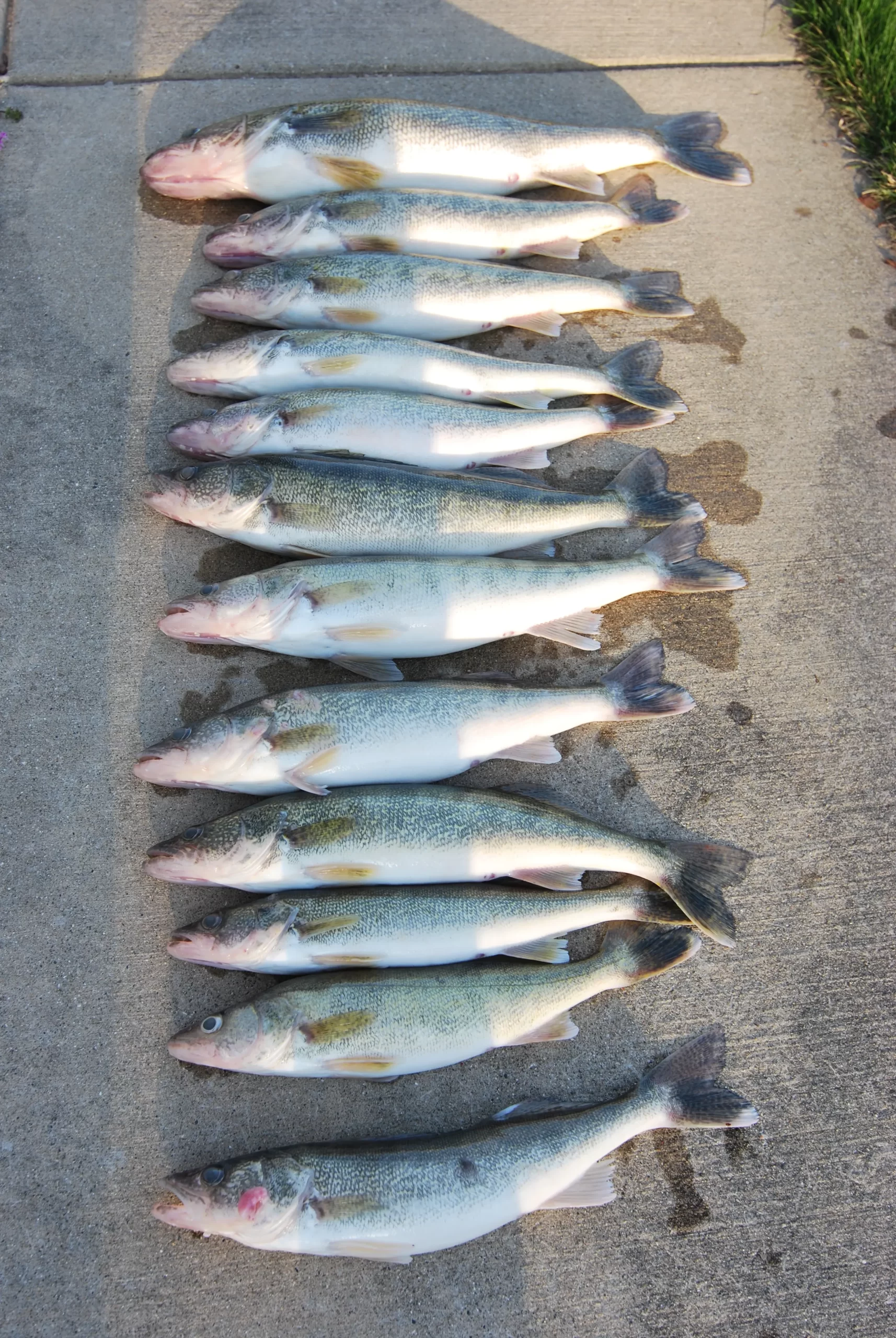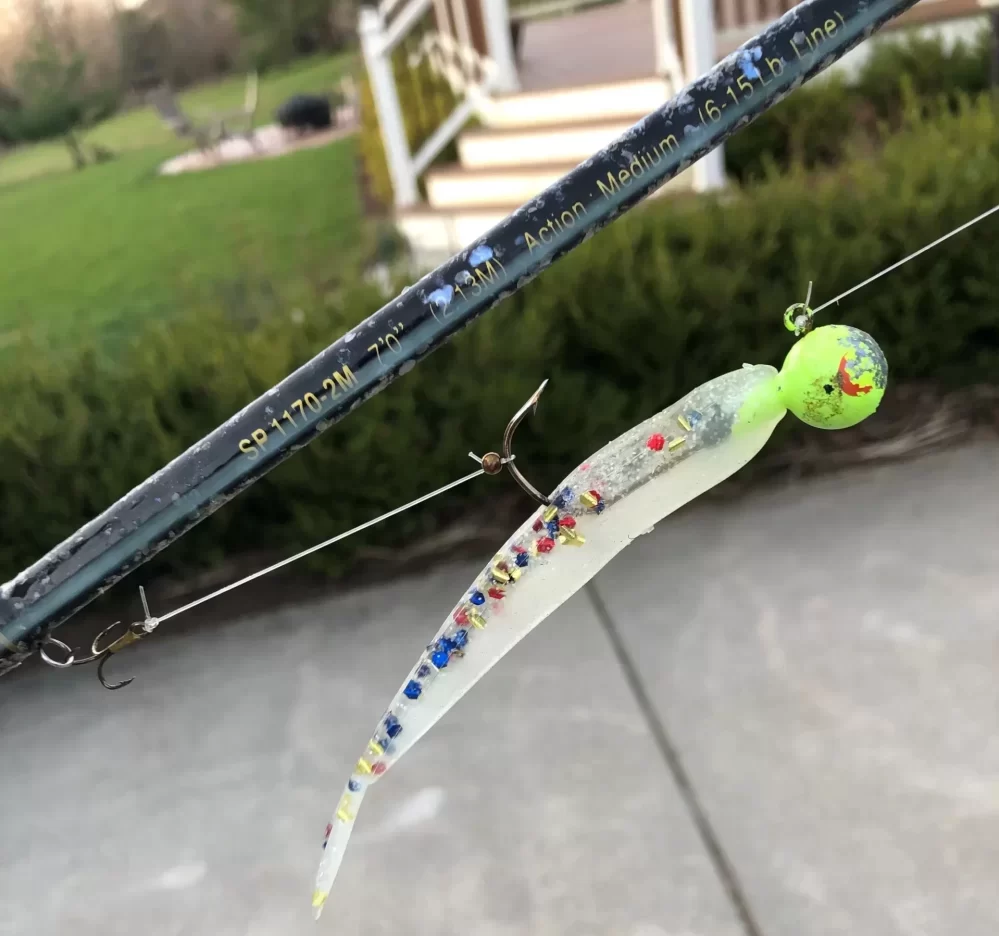Detroit River Walleye

* This page contains affiliate links. The Great Lakes Fisherman may earn a commission on items purchased through these links. For more on this, please click here.
Detroit River walleye fishing is a staple for many that live in the Detroit area. But believe it or not, folks come from all around the region and even remote parts of the country to take advantage of this incredible fishery. When the spring spawning runs begin, it can be fast action with many folks limiting out in an hour or two. Of course, this is no guarantee and it takes some know-how to make the proper adjustments to be successful. Here, we will discuss how to catch Detroit River walleye during the spring spawning run.
Timing
As with most types of fishing, timing is everything. Walleye begin their spring migrations into the river when the water temps reach the mid-30’s. Spawning peaks when temps reach the mid-40’s. For the Detroit River, this typically happens in early to mid April, but can vary from year to year. The general rule of thumb is, when April arrives, so do the walleye!
Where to Fish
During the spring runs, fish can be found just about anywhere in the river current. Water clarity can have a large impact on where the fish will be and what they can be caught on. If you are new to the region, a good starting place is to fish where you find concentrations of boats. This may be intimidating at first as the boats can be jammed up pretty close together. But don’t let this stop you! Simply start out just outside the pack until you get more comfortable with the program and then slowly start integrating. If you just don’t like fishing near the crowds, there are fish to be found throughout the river, it may just take a little more trial and error to find them.
Vertical Jigging
The main method used to catch Detroit River walleye is vertical jigging. This method can be used anytime of year on the river, but is particularly effective during the spring spawning run. First, let’s talk about the jigging setup.
The Rod/Reel
The ideal rod for walleye jigging should be a medium action graphite rod with a fast action tip. The fast action allows for a wider range of speed on the upstroke of the jig cycle. Most folks prefer a rod that is 6-7.5′ in length. Simply pair this with a good spinning reel and you have what you need.
Main Line
While monofilament will work, most experienced fisherman on the Detroit River use braid for their main line. The low-stretch property of braid allows you to feel the bottom better and detect the lighter bites, especially on the fall of the jig stroke. In addition, the braid will help provide a better hook-set. This is important as walleye have tough mouths.
The Leader
When using mono, leaders are not a must, but a lighter leader line will help break off your jig easier when you find a stubborn snag. The Detroit River is full of rocks, and snags are inevitable. You should expect to lose a few jigs every time out.
If you use a high-strength braid for your main line, a leader is a must. A 4 foot piece of 6-8 lb. flourocarbon line is recommended, due to its low-visibility properties but copolymer or monofilament will work as well. This lighter leader will break more easily when you find a snag, rather than having to cut your braid and losing a bunch of line.
The Jig
Most fishermen tend to use jig weights that range from 5/8 oz. to 1 oz. The idea is that you want the lightest jig that will keep your line veritcal and feeling the river bottom.
As far as jig color goes, it will depend on the day. If the water is cloudy and visibility is very low, start with a bright-colored jighead like chartruese, pink or red. On days when the water is clear, try a jig head color that matches your bait. More natural color patterns tend to work better on these clear-water days (blue-ice is good one to try).
And keeping your jigs sharp is important. The conditions at the river bottom will be hard on your tackle. Your jig hooks should be checked for sharpness periodically. A few strokes of a simple hook file is all you need to keep them sharp.
The Bait
Bait tends to fall into 3 categories, plastics, live bait, or both. The best advice is to attach a plastic bait with the color pattern you think will be most appealing (blue ice and purple ice are common colors), but it never hurts to tip it with a live offering. Tipping your plastic bait with a minnow or nightcrawler can make a difference.
The Stinger Hook
Adding a stinger hook to your jigging setup only helps. It never hurts. Stinger hooks can be easily made at home and added to the jig to help get those short strikes. It can’t be overstated how important this is on the Detroit River.
Jigging Tactics
When it comes to jigging for Detroit River walleye, there are some tricks that make all the difference between success and failure.
Staying Vertical
Keeping your line perfectly vertical between your rod tip and the boat is the key to catching more fish. It allows you to feel the bottom and know exactly where your jig is. If you come into contact with the bottom on an angle, you may be scraping your jig across the rocks as you jig. Not only does this not impart a consistent jigging action on the bait, it greatly increases the chances of a snag and will wear the paint off of your jigs much quicker.
While keeping your line vertical may sound straightforward, it is easier said than done. This is because there are two main factors that will be working against you: the river current and the wind.
The river current is pulling your boat downstream. The problem is that the current at the surface isn’t the same as the current further down in the water column. Furthermore, different parts of the river have differing amounts of current flow. This means that no matter where you are, even with no wind, it is likely that your line will not be vertical.
Now consider the wind direction. The wind will be pushing the boat in the direction from which it is blowing. To make matters worse, the wind may gust which means that the forces acting against you will change continously while you are on the water.
All of this means that each day you go out, you will need to compensate for these differences by using your boat’s trolling motor to ensure that your line is as vertical as possible. This cannot be understated. Whomever is responsible for the trolling motor will have a large responsibility for the the success of the rest of the boat.
Staying vertical may sound overwhelming, but with a little bit if practice, making these adjustments will become second nature.

The Jig Stroke
The Upstroke
Now that you are vertical, let’s talk a bit about the jig stroke. The rythym and height of the jig cycle will vary with the conditions. In general, the fish will be less agressive in colder water than they are in warmer water. For spawning fish in the cold spring water, this means, shorter strokes are usually better than long. So the snap on the upstroke should be only about a foot. Remember that what seems like a little movement to you translates to a lot more at your rod tip, and thus to the jig. It doesn’t take much movement at the rod handle to get a foot at the jig.
The Fall
After snapping the jig off of the bottom, the jig will want to fall back down. It is not remmended to let the jig free fall for a couple of reasons. First, it doesn’t look as natural to the predator fish as the jig is mimmicking injured baitfish, which tend to run out of energy and flutter back to the bottom. Second, if you do get a bite on the fall, you likely won’t feel it if there is slack in your line.
Instead, control the fall by keeping the line tight as the jig falls. This will allow any bite on the fall to be easliy telegraphed to you, especially if you are using braided line. I never realized how many bites I was missing on the downstroke until I switched from monofilament to braid.

Now all that’s left to do is catch fish. Good luck out there!

